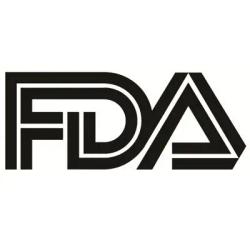
OR WAIT null SECS
COVID-19 Pandemic Did Not Alter Anaphylaxis Rates in Emergency Departments
A recent study reveals that anaphylaxis rates remain stable during the COVID-19 pandemic, despite reduced emergency visits.
A new study found that the COVID-19 pandemic had no impact on anaphylaxis rates.1
“Despite a general reduction in ED visits and probably also in anaphylaxis, the COVID pandemic did not affect the frequency of anaphylaxis nor the severity of reactions,” wrote investigators, led by Andrea Sangalli, from the University of Milan in Italy. “These data must be interpreted taking into account the lower exposure during COVID-19 period to various allergenic sources due to restriction measures.”
A 2020 study reported that approximately 4% to 14% of patients experiencing anaphylaxis need intensive care.2 Anaphylaxis admission rates vary globally, with Australia having the highest rate and Spain, Taiwan, and the United States having the lowest. The United States’ lower rate may stem from patient visits being coded as “observation” rather than admission.
Given the life-threatening nature of anaphylaxis and the reduced emergency visits during the 2020 – 2021 lockdown, Sangalli and colleagues examined anaphylaxis’ prevalence before and during the pandemic.1 They also assessed for anaphylaxis risk factors.
Leveraging 2018 – 2019 and 2020 – 2021 clinical records from a general emergency department in Milan, Italy, the team retrospectively analyzed data on demographics, comorbidities, chronic therapies, causes, severity, and adrenaline use.
The pandemic had a 36% reduction in emergency department admissions. Moreover, rates of suspected allergic reactions were similar before and during the pandemic (0.76% vs 0.72%; P = .43).
The study showed the frequency of anaphylaxis remained stable during the pandemic, only a slight dip of 0.12% in 2018-2019 to 0.11% in 2020 – 2021 (P = .65). The analysis also found no anaphylaxis differences in sex (59% in females vs 41% in males in 2020 – 2021; 58% in females vs 42% in males in 2020 – 2021; P = .91) and mean age (pre-COVID: 45.3 years; during COVID: 42.6 years).
Investigators found more patients with asthma, allergic rhinitis, or food allergy had anaphylaxis during the pandemic (54%) than before (14%) (P < .001). Additionally, more patients during the pandemic were on inhalator therapy (11.1% vs 1.6%; P = .0004) and antihistamine therapy (6.9% vs 0.8%; P = .02) compared with before the pandemic. Investigators detected no anaphylaxis differences for patients on antihypertensive therapy before and during COVID-19.
The main causes of anaphylaxis before and during the pandemic were food (53% vs 51%) and drugs (27% vs 33%). About 15% of the anaphylaxis cases before and during the pandemic had an unidentified trigger. Anaphylaxis triggered by hymenoptera stings had a low occurrence.
Similarly, the severity of anaphylaxis was similar before and during the pandemic (P = .27). Among the 120 reactions before the pandemic, 50.8% were grade 3, 21.7% were grade 4, and 27.5% were grade 5. The study reported 72 reactions during the pandemic: grade 3 (58.3%), grade 4 (21.7%), and grade 5 (27.5%). Neither gender nor cardiovascular diseases influenced the severity.
The study showed a significant positive correlation between anaphylaxis and patients > 50 years (34.3% grade 3, 21.4% grade 4, 44.3% grade 5; P < .001). Anaphylaxis was less severe in 122 patients < 50 years: 64.8% grade 3, 16.4% grade 4, 18.9% grade 5). The mean age in every grade was the following: grade 3 (39 years), grade 4 (48 years), and 52 years) (P < .001).
Angiotensin II receptor blockers, β-blockers, diuretics, and proton pump inhibitors were linked to increased severity (P < .01).
The study also found similar adrenaline use before and during the pandemic (68% vs 60%; P = .22). Moreover, 23% before the pandemic and 10% during the pandemic required airway support (P = .025).
“Our results suggest that the anaphylaxis frequency in ED was not affected by the COVID-19 pandemic,” investigators concluded.1 “Food anaphylaxis remained the most important cause, at least in our urban area. Ageing and some chronic therapies, mostly cardiovascular molecules, are risk factors for a more severe reaction. In the future, a national or regional study should be designed to register every event from E.D., emergency services and outpatient medical records to discover the real incidence and burden of anaphylaxis.”
References
Sangalli A, Fasiello A, Pravettoni V, Consonni D, Melli V, Jachetti A, Longo V, Montano N, Rivolta F. Anaphylaxis trend before and during pandemic: COVID-19 did not affect anaphylaxis frequency. Eur Ann Allergy Clin Immunol. 2025 Apr 29. doi: 10.23822/EurAnnACI.1764-1489.395. Epub ahead of print. PMID: 40297907.
Turner PJ, Campbell DE, Motosue MS, Campbell RL. Global Trends in Anaphylaxis Epidemiology and Clinical Implications. J Allergy Clin Immunol Pract. 2020 Apr;8(4):1169-1176. doi: 10.1016/j.jaip.2019.11.027. Epub 2019 Nov 28. PMID: 31786255; PMCID: PMC7152797.


